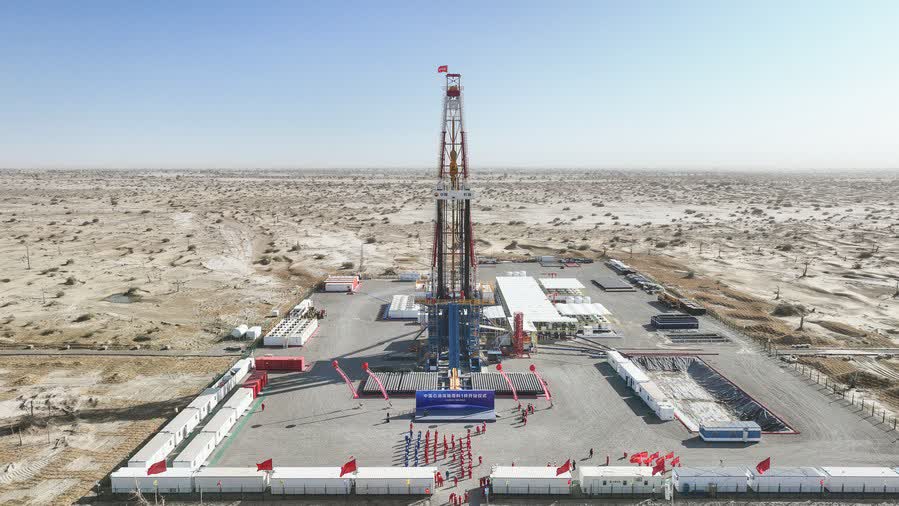
The world’s second-largest economy is expanding its frontiers above and below the planet’s surface. This week Chinese scientists began drilling for what is set to be the country’s deepest-ever borehole in the oil-rich Xinjiang region. The narrow shaft will penetrate more than ten continental strata, reaching cretaceous system rocks dating back some 145 million years. The project could be crucial in understanding how the Earth’s crust forms and evolves.
But getting to these extreme depths isn’t for the faint of heart, nor is it cheap. It can take dozens of years to get all the way down to the rock’s core, and even then, the results aren’t guaranteed to be spectacular. In addition, temperatures at these extremes wreak havoc on drill bits and pipes, making it challenging to maintain a hole that goes as deep as 12,000 feet. For example, the Russian Superdeep Borehole in the Kola Peninsula reached 12,262 feet (40,230 meters) and remained the most bottomless hole ever made. Still, it took 20 years to reach that point, and researchers could not probe the mantle at that level because of temperature extremes.
Researchers have been drilling for decades in hopes of piercing the crust and sampling the warm, mysterious area where the crust and mantle intermingle. This is called the Mohorovicic discontinuity, and it’s been a goal for geologists since the 1960s. The Soviets pushed hard for decades to reach it but were ultimately defeated by the challenges of drilling such a deep hole and the limitations of technology and funding.
Among the challenges is that the crust gets thicker as you go deeper, making it harder to rig and maintain the hole and poses significant safety risks. In addition, several other factors make it extremely difficult to reach the Mohorovicic discontinuity, including rock composition, brittleness, and thermal conductivity.
The new Xinjiang hole, known as Chikyu, is being drilled on the seafloor near the Mid-Atlantic Ridge and the Atlantis Massif, two of the plates that make up the Earth’s broken crust. The ocean floor is easier to access than the ice-covered land where other holes have been drilled, but it’s still challenging work. The narrow shaft will travel through over a mile of rock, and the samples it brings up from this extreme depth are expected to reveal the Earth’s composition and formation.
The ultimate goal is to reach the mantle, which will likely take time in the next few years. It will take a lot of patience and money, but researchers are confident they’ll eventually break through the crust.


